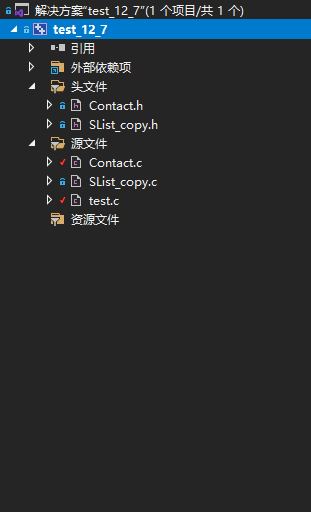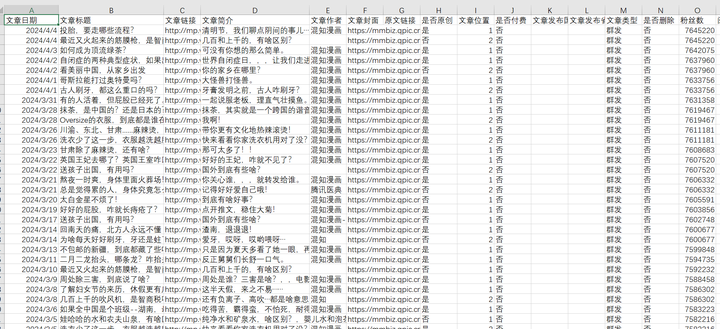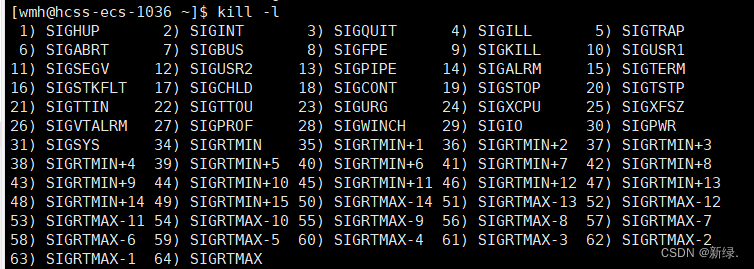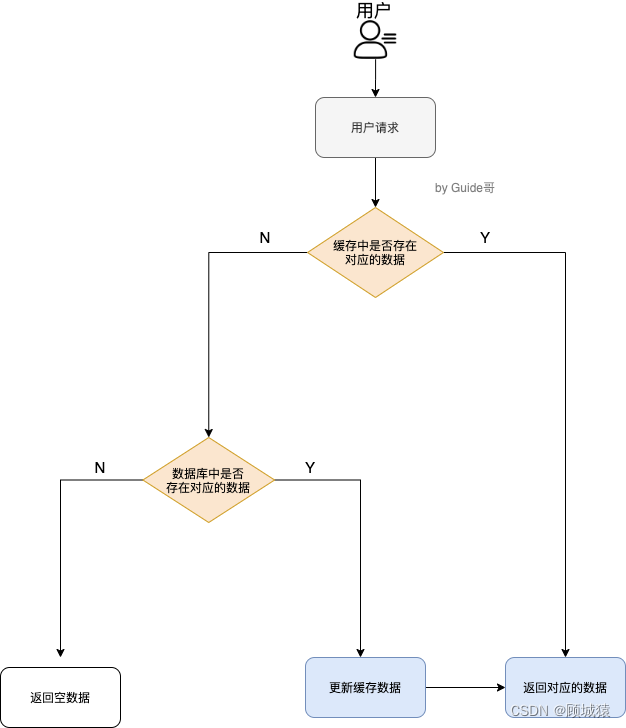使用的函数介绍
这里sqlite3_open、sqlite3_close就不介绍了
sqlite3_prepare_v2():
- 函数原型:
int sqlite3_prepare_v2(sqlite3* db, const char* zSql, int nByte, sqlite3_stmt** ppStmt, const char** pzTail);- 作用:准备 SQL 语句以供执行。这个函数将 SQL 语句编译为一个预处理语句对象,并返回一个状态码以指示编译过程中的任何错误。
- 参数解释:
db:指向已打开的 SQLite 数据库的指针。zSql:要准备的 SQL 语句的字符串。nByte:要准备的 SQL 语句的字节数,如果为负数,则直到遇到字符串的终止符(NULL 终止符)。ppStmt:用于存储编译后的预处理语句对象的指针。pzTail:输出参数,用于指向未使用的 SQL 语句部分的指针,通常为 NULL。sqlite3_step():
- 函数原型:
int sqlite3_step(sqlite3_stmt* pStmt);- 作用:执行 SQL 语句的下一个步骤。
- 参数解释:
pStmt:指向预处理语句对象的指针,该对象是使用 sqlite3_prepare_v2() 编译的。sqlite3_column_int():
- 函数原型:
int sqlite3_column_int(sqlite3_stmt* pStmt, int iCol);- 作用:从 SQL 查询结果的当前行中获取指定整数列的值。
- 参数解释:
pStmt:指向预处理语句对象的指针。iCol:要获取其值的列的索引(从 0 开始)。sqlite3_column_text():
- 函数原型:
const unsigned char* sqlite3_column_text(sqlite3_stmt* pStmt, int iCol);- 作用:从 SQL 查询结果的当前行中获取指定文本列的值。
- 参数解释:
pStmt:指向预处理语句对象的指针。iCol:要获取其值的列的索引(从 0 开始)。- sqlite3_finalize():
- 函数原型:int sqlite3_finalize(sqlite3_stmt* pStmt);
- 作用:接口中用于释放预处理语句对象(prepared statement)所占用资源的函数,可以确保资源被正确地释放,避免内存泄漏等问题。
SQLToLink()
从数据库到链表
方式一:
#include <stdio.h>
#include <stdlib.h>
#include <sqlite3.h>
// 定义链表节点
struct Node {
int int1;
int int2;
char string[100]; // 假设字符串长度最多为 100
struct Node* next;
};
// 定义链表
struct LinkedList {
struct Node* head;
};
// 初始化链表
void initLinkedList(struct LinkedList* list) {
list->head = NULL;
}
// 在链表尾部添加节点
void append(struct LinkedList* list, int int1, int int2, const char* string) {
struct Node* newNode = (struct Node*)malloc(sizeof(struct Node));
if (newNode == NULL) {
fprintf(stderr, "Memory allocation failed.\n");
exit(1);
}
newNode->int1 = int1;
newNode->int2 = int2;
strcpy(newNode->string, string);
newNode->next = NULL;
if (list->head == NULL) {
list->head = newNode;
} else {
struct Node* current = list->head;
while (current->next != NULL) {
current = current->next;
}
current->next = newNode;
}
}
int main() {
sqlite3* db;
sqlite3_stmt* stmt;
int rc;
// 打开 SQLite 数据库
rc = sqlite3_open("your_database.db", &db);
if (rc) {
fprintf(stderr, "Can't open database: %s\n", sqlite3_errmsg(db));
return 1;
}
// 准备查询语句
const char* sql = "SELECT * FROM your_table";
rc = sqlite3_prepare_v2(db, sql, -1, &stmt, NULL);
if (rc != SQLITE_OK) {
fprintf(stderr, "SQL error: %s\n", sqlite3_errmsg(db));
return 1;
}
// 初始化链表
struct LinkedList list;
initLinkedList(&list);
// 执行查询并将结果添加到链表
while ((rc = sqlite3_step(stmt)) == SQLITE_ROW) {
int int1 = sqlite3_column_int(stmt, 0);
int int2 = sqlite3_column_int(stmt, 1);
const unsigned char* string = sqlite3_column_text(stmt, 2);
append(&list, int1, int2, (const char*)string);
}
// 检查查询结果
if (rc != SQLITE_DONE) {
fprintf(stderr, "SQL error: %s\n", sqlite3_errmsg(db));
return 1;
}
// 关闭数据库连接
sqlite3_finalize(stmt);
sqlite3_close(db);
// 打印链表内容
struct Node* current = list.head;
while (current != NULL) {
printf("%d %d %s\n", current->int1, current->int2, current->string);
current = current->next;
}
// 释放链表内存
current = list.head;
while (current != NULL) {
struct Node* temp = current;
current = current->next;
free(temp);
}
return 0;
}
#include <stdio.h>
#include <sqlite3.h>
#include <stdlib.h>
#include <string.h>
// 定义链表节点
struct stu{
int id;
char name[20];
int score;
struct stu *p;
};
//注意这里链表头定义的是指针类型,所以add函数的struct stu **head1应该为二级指针,
//在传递参数时应该传递链表头的地址,没有传递头指针 head 的地址。
//这意味着 add() 函数中对头指针 head 的任何修改都不会反映到 main() 函数中的头指针 head 上
struct stu *head;
// 在链表尾部添加节点
void add(struct stu **head1,int id,char *name,int score){
struct stu *add = *head1;
struct stu *code;
code=(struct stu*)malloc(sizeof(struct stu));
if(code==NULL){
printf("error:malloc no!!!\n");
}
code->id=id;
strcpy(code->name,name);
code->score=score;
code->p = NULL;
if(*head1 == NULL){
*head1=code;
}else{
while(add->p != NULL){
add = add->p;
}
add->p = code;
}
}
int main(int argc,char** argv)
{
sqlite3 *pd;
char *errmsg;
sqlite3_stmt *ppStmt;
// 准备查询语句
char *sql = "select * from stu;";
int ret = 0;
if(argc<2){
printf("input:%s xxx\n",argv[0]);
}
// 打开 SQLite 数据库
if((ret=sqlite3_open(argv[1],&pd))!=0)
{
printf("ret = %d error:%s\n",ret,sqlite3_errmsg(pd));
return -1;
}
if((ret = sqlite3_prepare_v2(pd,sql,-1,&ppStmt,NULL))!=0){
printf("ret = %d error:%s\n",ret,errmsg);
return -1;
}
// 执行查询并将结果添加到链表
while(sqlite3_step(ppStmt)==SQLITE_ROW){
int int1 = sqlite3_column_int(ppStmt,0);
const unsigned char *char1 = sqlite3_column_text(ppStmt,1);
int int2 = sqlite3_column_int(ppStmt,2);
add(&head,int1,(char*)char1,int2);
}
// 打印链表内容
struct stu *stu1 = head;
while(stu1 != NULL){
printf("id = %d name %s score = %d\n",\
stu1->id,stu1->name,stu1->score);
stu1 = stu1->p;
}
// 关闭数据库连接
sqlite3_finalize(ppStmt);
sqlite3_close(pd);
//释放链表内存
while (head != NULL) {
struct stu* temp = head;
head = head->p;
free(temp);
}
return 0;
}
LinkToSQL()
从链表到数据库
#include <stdio.h>
#include <stdlib.h>
#include <sqlite3.h>
// 定义链表节点
struct Node {
int int1;
int int2;
char string[100]; // 假设字符串长度最多为 100
struct Node* next;
};
// 定义链表
struct LinkedList {
struct Node* head;
};
// 初始化链表
void initLinkedList(struct LinkedList* list) {
list->head = NULL;
}
// 在链表尾部添加节点
void append(struct LinkedList* list, int int1, int int2, const char* string) {
struct Node* newNode = (struct Node*)malloc(sizeof(struct Node));
if (newNode == NULL) {
fprintf(stderr, "Memory allocation failed.\n");
exit(1);
}
newNode->int1 = int1;
newNode->int2 = int2;
strcpy(newNode->string, string);
newNode->next = NULL;
if (list->head == NULL) {
list->head = newNode;
} else {
struct Node* current = list->head;
while (current->next != NULL) {
current = current->next;
}
current->next = newNode;
}
}
int main() {
sqlite3* db;
int rc;
// 打开 SQLite 数据库
rc = sqlite3_open("your_database.db", &db);
if (rc) {
fprintf(stderr, "Can't open database: %s\n", sqlite3_errmsg(db));
return 1;
}
// 创建表
const char* create_table_sql = "CREATE TABLE IF NOT EXISTS your_table (int1 INTEGER, int2 INTEGER, string TEXT);";
rc = sqlite3_exec(db, create_table_sql, NULL, 0, NULL);
if (rc != SQLITE_OK) {
fprintf(stderr, "SQL error: %s\n", sqlite3_errmsg(db));
sqlite3_close(db);
return 1;
}
// 初始化链表
struct LinkedList list;
initLinkedList(&list);
// 在链表中添加一些示例数据
append(&list, 123, 456, "Example1");
append(&list, 789, 1011, "Example2");
// 遍历链表并将数据插入数据库
struct Node* current = list.head;
while (current != NULL) {
// 准备插入语句
char insert_sql[200];
sprintf(insert_sql, "INSERT INTO your_table (int1, int2, string) VALUES (%d, %d, '%s');", current->int1, current->int2, current->string);
// 执行插入语句
rc = sqlite3_exec(db, insert_sql, NULL, 0, NULL);
if (rc != SQLITE_OK) {
fprintf(stderr, "SQL error: %s\n", sqlite3_errmsg(db));
sqlite3_close(db);
return 1;
}
current = current->next;
}
// 关闭数据库连接
sqlite3_close(db);
return 0;
}











































